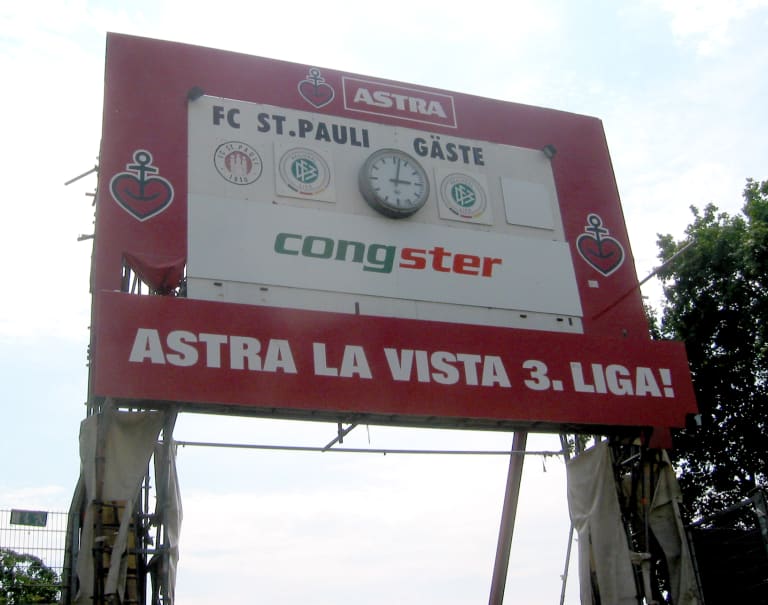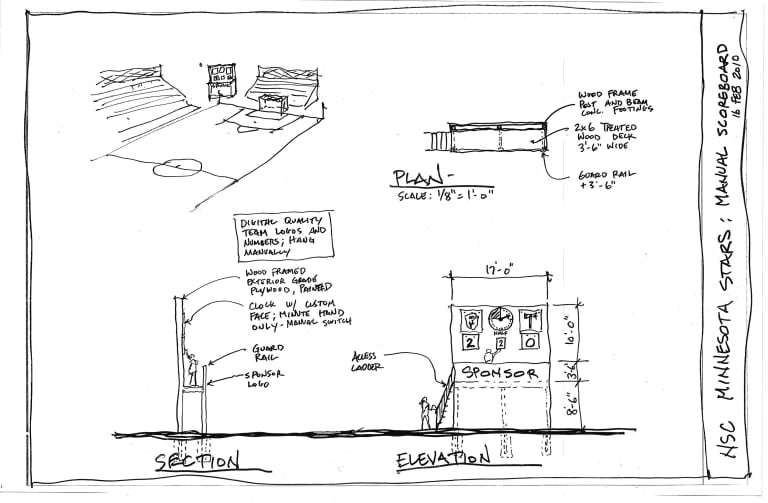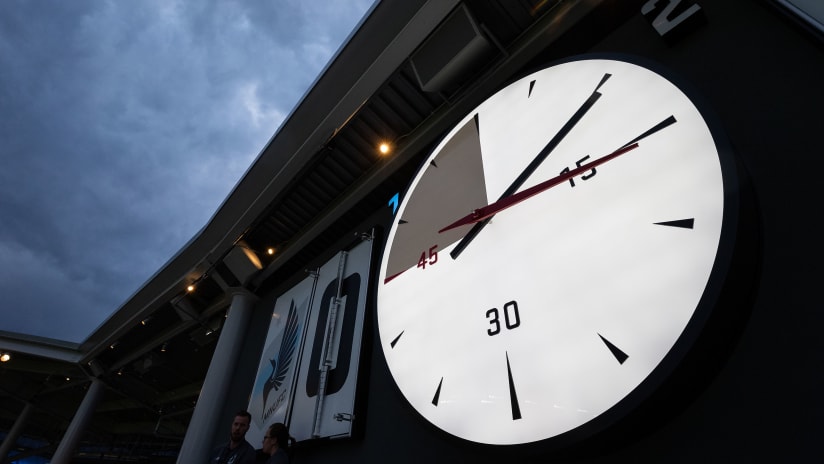There is much about Minnesota United’s new home, Allianz Field, that is state of the art. The LED screen above the Wonderwall is gigantic. The PTFE screen that wraps around it can be lit in the soft, shimmering colors of the Northern Lights. Your tickets? Digital. The rain that falls on the stadium? Captured and reused for irrigation on the site. But fittingly, there’s an element at Allianz Field’s north end that connects a thread to the club’s history in Minnesota soccer and then connects that history to the game’s roots in Europe.
It begins 13 years ago in 2006.
Three friends and longtime soccer supporters — Bruce McGuire, Neal Logan and Andy Wattenhofer — headed to Germany for the World Cup, their tickets booked for a two-and-a-half-week stay to follow the U.S. men’s national team on their journey through the planet’s greatest soccer competition. Unfortunately, the USMNT had other plans.
“The United States doesn’t make it to the second round,” said Wattenhofer. “So the three of us headed up to the city of Hamburg where FC St. Pauli is based. We’re just hanging around, being tourists and stuff and we walked into St. Pauli stadium. It was a really cool day actually, there were players hanging around and watching the World Cup on a screen.”
At the historic Millerntor-Stadion — which opened in 1963 — the three friends hobnobbed with locals and players in the pub attached to the venue, until one of the players — they can’t recall which one — offered to let them into the stadium itself for a tour.

“The whole place reminded me of something like Fenway Park, Wrigley Field, old baseball stadiums because it was very patchwork, it was very rudimentary,” said McGuire.
“We were taking pictures of this clock and we thought that it was awesome, this analog clock in the stadium,” added Wattenhofer.
Despite their disappointment at the U.S. men’s team’s performance, the trio made the most of their chance to experience the world’s game in another part of the world, but they returned to Minnesota to a soccer crisis right in their own backyard.
“We came back and the scoreboard had broken again at NSC [the National Sports Center] and it was going to cost $60 to $70 grand for a scoreboard,” said McGuire. “They didn’t need to spend that kind of money for what was going on there at the time. Here’s a team that’s getting 2,000 fans on a good night, you’re not going to spend 70 grand on a scoreboard. So they were bringing in these little portable scoreboards and half the people there would just stand in front of them, not even knowing that they were there.”
“It was Neal, actually, who came up with a concept drawing,” said Wattenhofer. “Neal’s an architect so he’ll to draw things on a napkin. He draws this new scoreboard out and I think it was his idea to pitch the analog clock on there because of the St. Pauli one.”

Original sketch of scoreboard at NSC by Neal Logan
The scoreboard was built, and for the low, low price of just $12,000. It would stand in the southeast corner of the stadium at NSC as the local soccer team went from the Minnesota Thunder to the NSC Minnesota Stars to Minnesota Stars FC to, eventually, Minnesota United FC. Fans slapped scores up as the clock ticked the minutes up to 45, then counted 15 minutes of halftime, then another 45 for the second half. With the end of the team’s tenure at NSC as the club moved up to MLS and on to TCF Bank Stadium, some of the charming elements that came along with second division soccer fell by the wayside: no food trucks parked shouting distance from the bleachers, no smoke for the supporters, no hornet’s nests in the press box. Sometimes, you have to give up some small pleasures for bigger opportunities.
But some things get to endure.
As Allianz Field began to take shape, renderings of the building’s exterior and interior began to find their way to social media. “Somebody zoomed in and zoomed in and zoomed in,” said McGuire, “and it was very distorted but somebody posted somewhere on social media like, ‘Did you guys see this? I think there’s going to be — this image has a manual scoreboard’ and people freaked out but no one would confirm or deny.”
And then, months later, McGuire received a text from an unknown number with a photo of the stadium’s giant analog clock lying on the floor of a factory and a note: “We are crating this up today to ship to Saint Paul.” A friend of a friend of a friend who worked at the company that built the clock had made the connection to McGuire and the scoreboard at NSC.
For the die-hards, for the lifers, the clock’s presence at Allianz Field directly across from the Wonderwall means a lot. But it’s entirely possible it’s gone all but unnoticed by the thousands of new fans just getting their first taste of professional soccer in Minnesota this season. For people wondering why the clock counts up and not down, they’re probably more inclined to watch the digital display on the scoreboard above the Wonderwall or on the fascia that encircles the stadium. In this day and age, all of us are, probably. We’re used to screens and to the precision afforded by knowing in exactly which minute a player scored or was carded.
But the next time you’re at a game, take a moment to watch the analog clock. For lack of a more artful term, there’s just something more physical about watching the second hand count up another minute. There’s a more tactile feel to seeing there’s only about five more minutes left in the half — just five minutes for the home side to claw their way back in or hold tight to a lead.
It’s nothing earth-shattering or groundbreaking. It just adds a little weight, a little connection to the past even as it forges connections to the future for every fan going to his or her first game today. Every path through the game zigs and zags, this way and that, and all those paths taken together can connect in unexpected ways over decades.
“As high tech and as modern as the new stadium looks, there’s this element of it that is so personal. It’s so unique,” said McGuire. “You hear of stadiums that have a unique thing and I didn’t even think about that at the time when I first saw it but now it’s hit me like wow, that’s going to be one of the signatures which is amazing. That even makes it more incredible that it was just a random trip to visit the St. Pauli stadium and some guy took us inside and we took a picture of it and here it is now. That line, remarkable.”





